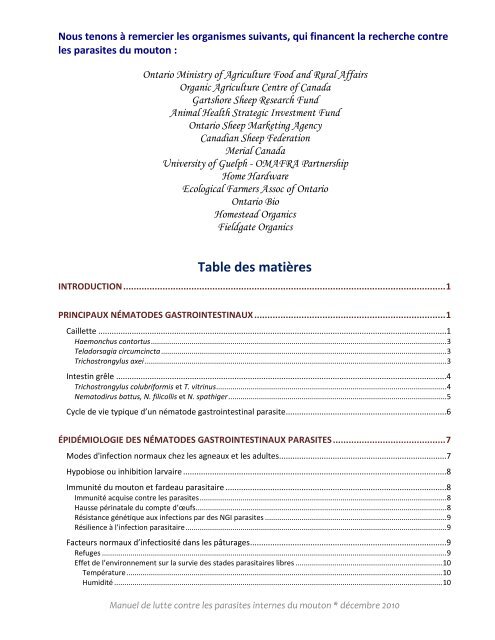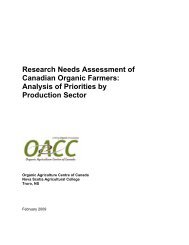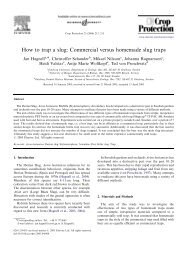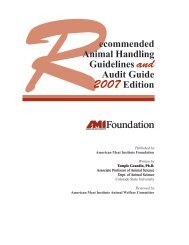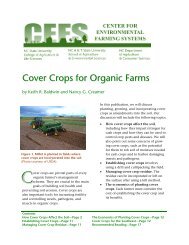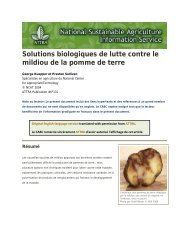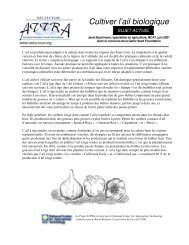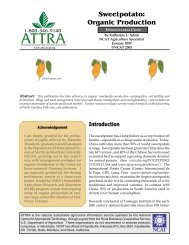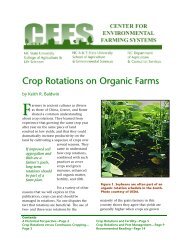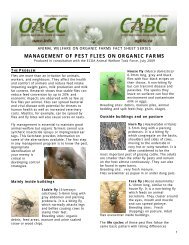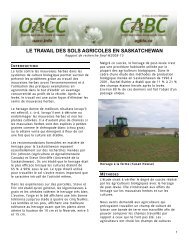Manuel de lutte contre les parasites internes du mouton
Manuel de lutte contre les parasites internes du mouton
Manuel de lutte contre les parasites internes du mouton
- No tags were found...
Create successful ePaper yourself
Turn your PDF publications into a flip-book with our unique Google optimized e-Paper software.
Nous tenons à remercier <strong>les</strong> organismes suivants, qui financent la recherche <strong>contre</strong><strong>les</strong> <strong>parasites</strong> <strong>du</strong> <strong>mouton</strong> :Ontario Ministry of Agriculture Food and Rural AffairsOrganic Agriculture Centre of CanadaGartshore Sheep Research FundAnimal Health Strategic Investment FundOntario Sheep Marketing AgencyCanadian Sheep Fe<strong>de</strong>rationMerial CanadaUniversity of Guelph - OMAFRA PartnershipHome HardwareEcological Farmers Assoc of OntarioOntario BioHomestead OrganicsFieldgate OrganicsTable <strong>de</strong>s matièresINTRODUCTION ........................................................................................................................... 1PRINCIPAUX NÉMATODES GASTROINTESTINAUX ......................................................................... 1Caillette ............................................................................................................................................................1Haemonchus contortus ................................................................................................................................................. 3Teladorsagia circumcincta ............................................................................................................................................ 3Trichostrongylus axei .................................................................................................................................................... 3Intestin grêle ....................................................................................................................................................4Trichostrongylus colubriformis et T. vitrinus................................................................................................................. 4Nematodirus battus, N. filicollis et N. spathiger ........................................................................................................... 5Cycle <strong>de</strong> vie typique d’un némato<strong>de</strong> gastrointestinal parasite ........................................................................6ÉPIDÉMIOLOGIE DES NÉMATODES GASTROINTESTINAUX PARASITES ........................................... 7Mo<strong>de</strong>s d'infection normaux chez <strong>les</strong> agneaux et <strong>les</strong> a<strong>du</strong>ltes ...........................................................................7Hypobiose ou inhibition larvaire ......................................................................................................................8Immunité <strong>du</strong> <strong>mouton</strong> et far<strong>de</strong>au parasitaire ...................................................................................................8Immunité acquise <strong>contre</strong> <strong>les</strong> <strong>parasites</strong> ......................................................................................................................... 8Hausse périnatale <strong>du</strong> compte d’œufs ........................................................................................................................... 8Résistance génétique aux infections par <strong>de</strong>s NGI <strong>parasites</strong> ......................................................................................... 9Résilience à l’infection parasitaire ................................................................................................................................ 9Facteurs normaux d’infectiosité dans <strong>les</strong> pâturages ........................................................................................9Refuges ......................................................................................................................................................................... 9Effet <strong>de</strong> l’environnement sur la survie <strong>de</strong>s sta<strong>de</strong>s parasitaires libres ........................................................................ 10Température ........................................................................................................................................................... 10Humidité ................................................................................................................................................................. 10<strong>Manuel</strong> <strong>de</strong> <strong>lutte</strong> <strong>contre</strong> <strong>les</strong> <strong>parasites</strong> <strong>internes</strong> <strong>du</strong> <strong>mouton</strong> * décembre 2010


